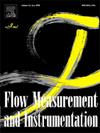基于泵VFD数据和LLM的建筑冷冻水免编码虚拟流量计
IF 2.3
3区 工程技术
Q2 ENGINEERING, MECHANICAL
引用次数: 0
摘要
随着人工智能技术的发展,越来越多的研究人员采用大型语言模型(llm)作为辅助工具。通过额外的扩展,如Wolfram Alpha、网络搜索引擎和代码解释器,法学硕士有望实现无需手动编码的数据驱动建模。在建筑暖通空调系统中,冷冻水流量是实现暖通空调系统实时优化控制的关键变量。通常,流量是由现场流量计测量的。由于流量计的脆弱性,人们开发了各种方法,利用其他被监测变量(即虚拟流量计)来预测实时流量,作为对流量计读数的补充。为了以最少的手工编码开发虚拟流量计,本研究提出了一种基于llm和泵变频驱动(VFD)数据的方法来建模和预测冷冻水流量。对三种传统的建模方法进行了手工仿真比较。采用豆宝方法预测冷冻水流量时,均方根误差(RMSE)小于9.05 m3/h,略高于人工随机森林方法(8.70 m3/h),但低于人工物理模型(11.28 m3/h)和人工KNN方法(15.69 m3/h)。因此,在可接受的标准范围内,验证了所提出方法的精度性能与传统方法相当。此外,该方法在减少手工编码方面优于传统方法。本文章由计算机程序翻译,如有差异,请以英文原文为准。
Coding-free virtual flowmeter for building chilled water using pump VFD data and LLM
With the development of artificial intelligence technologies, large language models (LLMs) have been adopted by an increasing number of researchers as assistants. With additional extensions, such as Wolfram Alpha, web search engine and code interpreters, LLMs are promising to enable data-driven modelling without manual coding. In building HVAC (heating, ventilation and air-conditioning) systems, chilled water flow rate is a critical variable for real-time optimal control of HVAC systems. Typically, the flow rate is measured by an on-site flowmeter. Due to the vulnerability of flowmeters, various methods have been developed to predict the real-time flow rate with other monitored variables (i.e., virtual flowmeter), as a supplement to the flowmeter reading. To develop a virtual flowmeter with minimal manual coding effort, this study proposes an approach based on LLMs and pump variable frequency drive (VFD) data to model and predict chilled water flow rate. Three conventional modelling methods were manually implemented for comparison. When predicting chilled water flow rate using the proposed approach (with Doubao), the root mean square error (RMSE) is below 9.05 m3/h, which is slightly higher than the result of artificial random forest method (8.70 m3/h), but lower than the results of artificial physical model (11.28 m3/h) and artificial KNN (15.69 m3/h). Hence, it is verified that the accuracy performance of the proposed approach is comparable to conventional methods, within the acceptable criteria. Moreover, the proposed approach outperformed the conventional methods on reducing manual labor on coding.
求助全文
通过发布文献求助,成功后即可免费获取论文全文。
去求助
来源期刊

Flow Measurement and Instrumentation
工程技术-工程:机械
CiteScore
4.30
自引率
13.60%
发文量
123
审稿时长
6 months
期刊介绍:
Flow Measurement and Instrumentation is dedicated to disseminating the latest research results on all aspects of flow measurement, in both closed conduits and open channels. The design of flow measurement systems involves a wide variety of multidisciplinary activities including modelling the flow sensor, the fluid flow and the sensor/fluid interactions through the use of computation techniques; the development of advanced transducer systems and their associated signal processing and the laboratory and field assessment of the overall system under ideal and disturbed conditions.
FMI is the essential forum for critical information exchange, and contributions are particularly encouraged in the following areas of interest:
Modelling: the application of mathematical and computational modelling to the interaction of fluid dynamics with flowmeters, including flowmeter behaviour, improved flowmeter design and installation problems. Application of CAD/CAE techniques to flowmeter modelling are eligible.
Design and development: the detailed design of the flowmeter head and/or signal processing aspects of novel flowmeters. Emphasis is given to papers identifying new sensor configurations, multisensor flow measurement systems, non-intrusive flow metering techniques and the application of microelectronic techniques in smart or intelligent systems.
Calibration techniques: including descriptions of new or existing calibration facilities and techniques, calibration data from different flowmeter types, and calibration intercomparison data from different laboratories.
Installation effect data: dealing with the effects of non-ideal flow conditions on flowmeters. Papers combining a theoretical understanding of flowmeter behaviour with experimental work are particularly welcome.
 求助内容:
求助内容: 应助结果提醒方式:
应助结果提醒方式:


